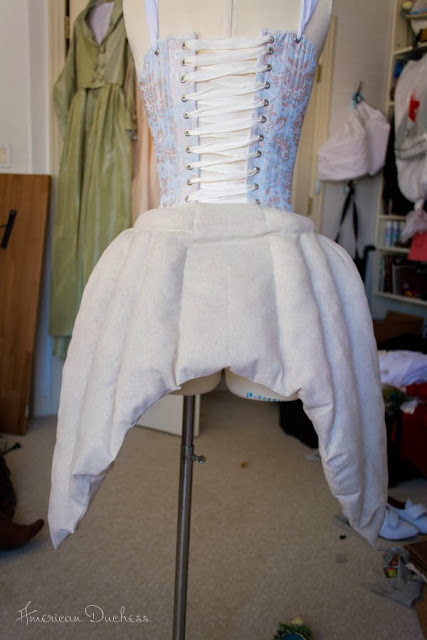Last week, when sorting out hems and skirt volumes, I decided I needed a new bum. The en fourreau-ish-ness of the center back on the redingote didn't want to lay nicely over more hefty bums, so I was looking for something that would allow that portion of the dress to lay smoothly, while providing oomph to the rest of the skirt.
I immediately thought of Demode's excellent research, "Late 18th Cenury Skirt Supports: Bums, Rumps, & Culs," so went scurrying off to brush up on what sort of pa-dunk-a-dunk I needed to get the shape I wanted.
I was intrigued by the many bum styles satirized in this fabulous Rushworth print, from 1785, in the Lewis Walpole Library:
The bum in the top row, second from the right, caught my attention. In my brainbox I imagined it creating flare at the sides, while remaining flat-ish at the center back, and helping the skirt to transition smoothly from the waist into a backward sweep.
So here's my take on it:
It came out quite large, and I have a second, small bum stacked beneath it to angle the whole thing back a bit more. This stacked bum method reminds me of the Elizabethan wheel farthingales shown in Period Costume for Stage & Screen
 |
| Please excuse my messy messy room - shown here from the inside out is: small bum, angel wing bum, ugly puffer, synthetic taffeta petticoat, and silk taffeta petticoat. |

